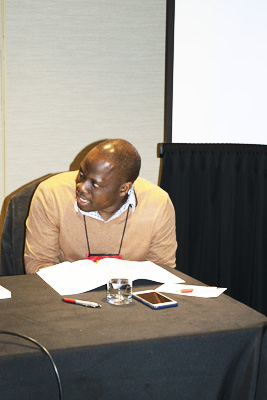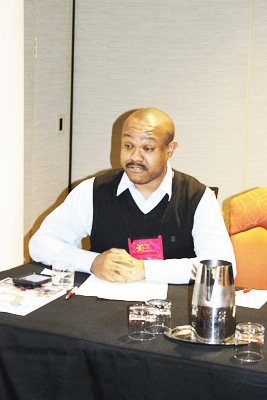This piece is a summary of an original research by CH Associates Johan Josefsson and Inga-Lill Aronsson.
___________________________________________________________________________________
This article discusses the establishment and development of the heritage concept and how it finally found itself being called into question and at risk of being discarded. The article uses a multi-analytical frame including the phenomenological approach. The narrative begins in a European context with Sweden as the starting point.
In Swedish the word for heritage is ‘kulturarv’. The everyday notion and use of the separate elements kultur (’culture’) and arv (’legacy’) does not lead to any severe disputes as long as the words are not combined into kulturarv. In this compound, the semantic meaning becomes complex, ambiguous and diffuse, complicating the use of heritage in, for example, the tourist sector.
The authors also note the patriarchal overtones of heritage as expressed in the World Heritage Convention official emblem, where the Spanish and French denominations of our world heritage are Patrimonio Mundial and Patrimoine Mondial respectively (patrimonio < Latin ‘patrimony, fatherly heritage, fatherly descent’; pater ‘father’). Further, the authors argue that heritage nominations, or the lack of these, could be results of intersubjective processes governed by power groups such as ’heritage experts’ and politicians.
As a way of challenging the present heritage concept, enriching and bringing it into the 21st century, the article introduces the concept of ‘life-values’ that Josefsson during fieldwork in Albania formulated as an alternative (or complement) to the traditional heritage concept. Inspired from the phenomenological concept of lifeworld, life-values refer to phenomena that provide people with life-enhancing meanings.
Compared to heritage, life-value is a better term to describe the subjective dimension of things in general, regardless if they consist of material objects or abstract elements. Hence, life-values are free from the prerogatives and power aspects involved in the selection and interpretation of heritage, as in the present and much used “Authorized Heritage Discourse” (AHD). Life-values are omnipresent and transcendent and have no temporal or spatial limits. They might be a better description of how humans, seen as constituting of mind and body, to a higher degree respond to the world, before discourses, labels, and concepts such as ‘heritage’.
An interview study, conducted by Josefsson during his internship at the National History Museum in Tirana, showed that 56.9 % associated cultural heritage with the “past”, while 25 % associated heritage with “culture”. Furthermore, 22.2 % associated history with immaterial heritage. The result shows clearly the conceptual nexus of culture, cultural heritage and immaterial heritage are all associated with identity. This is in accordance with the introduced notion of life-values.
This ambiguity can also be seen in all the different forms that heritage is manifested, such as in “uninherited heritage”, and “inherited non-heritage” – a term that Josefsson developed during a field trip to Mount Dajti National Park outside Tirana. The first mentioned refers to disputed heritage, and the last one refers to not officially proclaimed heritage, which is still heritage in the sense that it has been passed on to further generations.
Why heritage could be disputed, contested or ‘dissonant’, is because heritage represents different values for different groups and individuals – symbols that are strong enough to fight for. This is in conflict with for example UNESCO which, in its World Heritage List, assigns fixed, innate and universal values to something that is changeable, negotiable and non-universal. The interpretation and selection of heritages becomes subject of a subjective-objective dilemma.
The article concludes that the cultural heritage concept is ambivalent and shows similarities to the concept of culture that some years ago was said to be everywhere and therefore nowhere. Consequently, the heritage concept has slipped into a semantic vagueness and arbitrariness that makes it difficult to use analytically.
Insights and further research
In order to understand heritage in a holistic way, every dimension of it needs to be explored. This includes not being limited to the institutionalized heritage, but to go beyond the concept to see what else is there that can add something to the discourse. We argue that this “other things” could be explored through studies of the mundane and subjective aspect of heritage, and of cultural/natural “things” in general. In this sense, phenomenology is a useful theory to build the investigation of heritage on. Suggestions for methodology include an extended application of field studies involving the senses and the body, as well as visual research and in-depth interview studies. One option is to apply the research method of ‘grounded theory’, where the coding and memoing could play an important part. The memos do not have to be in the form of written field notes, but could also be photographs, videos, etc.
Besides continuing the studies of the phenomena in Albania, a holistic perspective on heritage requires analyses of other, in terms of (heritage) tourism, less recognized areas, for example, Kosovo. This opens up for a comparative study, where the grounded theory could be tested further.
Conclusion
This article is based on Josefsson’s master’s thesis in museum and cultural heritage studies, Uppsala University, supervised by Aronsson. The heritage research would benefit from a standpoint where the heritage concept and other related established concepts are not taken for granted, because when they are, they tend to block our mindset; it is hard to go outside the box, when the box is discursively closed. Albania offers a good opportunity to study the phenomena in a general way, let them be official heritage or mundane things, due to the lack of an intensive (heritage) tourism. Hence, there is a chance to explore heritage before it is called ’heritage’.
_______________________________________________________________________________________
Publication details:
Johan Josefsson and Inga-Lill Aronsson, “Heritage as Life-Values: A Study of the Cultural Heritage Concept,” Current Science, 110: 11 (2016).
MLA Citation: Johan Josefsson and Inga-Lill Aronsson. “Heritage as Life-Values: A Study of the Cultural Heritage Concept — By Johan Josefsson and Inga-Lill Aronsson.” ComparativeHeritage.com. 26 Jan. 2018. https://comparativeheritage.com/2018/01/26/heritage-as-life-values-a-study-of-the-cultural-heritage-concept-by-johan-josefsson-and-inga-lill-aronsson




